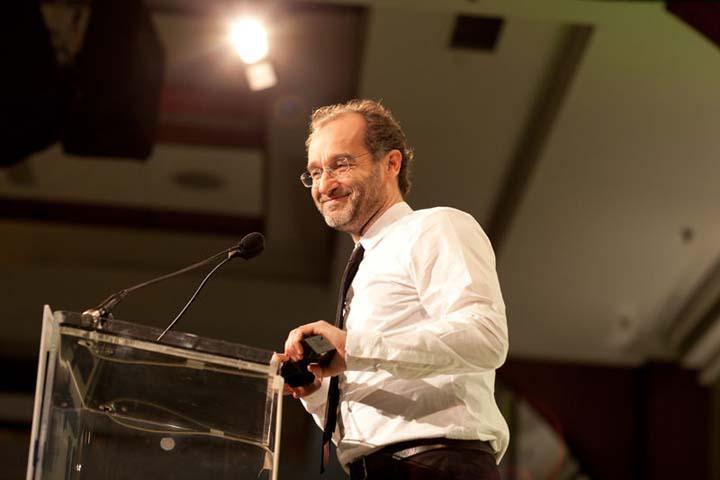What to Photograph?
I recall the very first project I gave to my students on my very first day as a photography tutor. If they learned a tenth as much about photography as I did from it, I’d consider it a success. I had a group of thirty-six students and it went something like this:
Each student thought of an object, place or scenario to be photographed. The thirty-six instructions were compiled and given to all thirty-six students. Each was given a roll of color film (thirty-six exposures) with which to make one attempt at each instruction.
They processed their film at a local lab and brought their six-by-four inch prints to the studio. We laid them out in a huge grid, so that vertically you could see thirty-six different responses to the same instruction, while horizontally you might be able to discern each student’s approach or "style." I still have the list of instructions they gave each other:
A red
ball
A tree and a dog
An ugly photograph
A political argument
A kiss
A shallow focus image of a bar of
soap
A random photograph
An unambiguous photograph
Grass and concrete
An old fashioned photograph
A futuristic
photograph
A blue car and a white car
Nigeria
Timeless beauty
Flowing water
A woman dressed as a man
An empty room
Consumerism
A person crying
A really bad smell
Bright clothing lit by flash
A dangerous
place
Dawn
Justice
A cheese and tomato omelette
A boy shoplifting
A plate in
the air
A modern landscape
A car park at night
Things in a pile
Things in a long line
A fake
photograph
A celebrity
Someone asleep
A classic still life
A smile
This is a list compiled by nineteen-year-olds
thinking they might want to take photography seriously and I think it is remarkable in that light. It tells you something about their “world” and how photography might fit into it or
express it. It also seems uncannily like an inventory of all the major trends in “art photography” from the 1960s to the 2000s! We didn’t really know what we were doing but the
results proved to be so fascinating for the group that we put the grid up on the studio wall and it stayed there all year. I wish I’d kept the pictures. All 1,296 of them. David Campany a the 2012 Infinity Awards. Photo © Image Singuliere,
courtesy International Center of Photography.
David Campany a the 2012 Infinity Awards. Photo © Image Singuliere,
courtesy International Center of Photography.
David Campany is a writer, curator, and artist. In 2013 he curated major shows of the work of Victor Burgin (at Ambika P3, London) and Mark Neville (The Photographers' Gallery, London). His books include Art and Photography (Phaidon, 2003), Photography and Cinema (Reaktion, 2008), Jeff Wall: Picture for Women (Afterall, 2009), Walker Evans: the magazine work (Steidl 2013), Rich and Strange (Chopped Liver Press, 2012) and Gasoline (MACK Editions, 2013). His essays on photography appear in journals such as Frieze, Aperture, Art Review, Photoworks and Oxford Art Journal. He is a co-founder of the magazine PA. In 2012 David received the ICP Infinity Award for his writings on photography. He teaches at the University of Westminster, London.
Editor’s Note: I found this story in a back issue of Source Photographic Review [and it is posted here by permission of the editors and the author]. Several days later I was still thinking, “What a brilliant approach to teaching beginning photography.” While David Campany conjured up this assignment in the age of color print film and one-hour processing, it could be adapted for teaching now. Say, for example, you have 24 students who come up with 24 instructions. Fujifilm comes in 35mm, 24 exposures. The trick would be to locate enough 35-mm manual film cameras, such as the exceptional Yashica FX3 Super, which can be found used online. In most metropolitan areas, more and more professional labs are offering minilab services at reasonable prices [The Color House in New York; Swan Photo Lab in Seattle; and Rayko Photo Center in San Francisco, for example].
The principles of this assignment could also be adopted by an individual wanting to shed old habits. Come up with 24 scenarios; shoot one roll of film for each scenario, allowing a week for each. Either way, you will have a 24 x 24 grid of 576 photos, and likely, a fresh approach to image making.—Peggy Roalf





